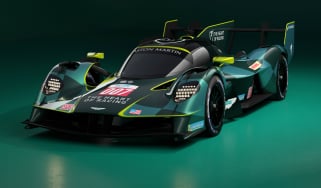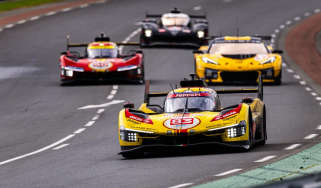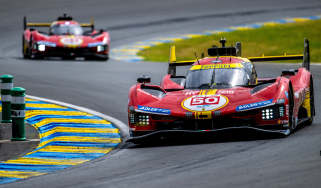Le Mans, and the future of Nissan’s front-drive WEC racer
evo talks to Darren Cox about the remarkable GT-R LM Nismo, and the future of Nissan’s WEC program
The biggest story at Le Mans was undoubtedly Porsche’s victory, finally edging Audi from the top spot of the famous endurance race. But Nissan was big news too, with its shock front-wheel drive LMP1 car.
In the race, the car ultimately lacked pace, and a multitude of problems saw only one car reach the finish line.
In the run-up to the team’s first post-Le Mans test session in America, we grabbed 20 minutes with Nissan and Nismo’s Global Motorsport Director, Darren Cox
evo: Congratulations on getting a car to the finish – that must be something you’re proud of?
Darren Cox: Everybody in the garage did an amazing job. Every time the car came in there was no question the thing was going to go back out again, but to get one car home and to get the mileage that we got was a phenomenal effort from everybody within the timeframe.
We had the project green-lit three months before Le Mans, which is probably the shortest-ever turnaround from blank piece of paper to being on track with a completely new concept. The progress is tremendous in terms of knowledge, and we’ve come out of Le Mans with a huge amount of knowledge and information.
That’s the positive we take on-track, to back up the success we had off-track - I think we won the fans’ approval, and press approval for ‘lifting the garage door’ on our project. We had something like 2.8 million viewers on our live on-board stream – Game of Thrones had around 1.7 million!
evo: You presumably got a fair bit of data? By the end of the race, was the car that finished already developing from qualifying?
DC: I think we very quickly realised the compromises we had to work with that weekend, in terms of the stuff we couldn’t re-engineer. The car at the moment is very sensitive to ride height changes, tyre pressures, and temperatures.
We needed to give to Michelin was a huge amount of information about the tyres. They’re one of the most important things on the car, and can unlock most of the performance. If you have a construction suited to your car, it’s much easier to manage the ride height.
We’ve got a test coming up at the end of July, with some things we already planned that we didn’t have ready for Le Mans, plus a load of stuff we found out during the race. We’ll see if what we’ve learned and adapted since Le Mans will improve things.
evo: What was the best feedback the drivers gave – what can you take forward that will improve the car the most?
DC: Like any driver, they want to have consistency of feel in the car, they want it to do the same thing every lap – I think we got to that point by the end of the race weekend.
Very simply, everyone can see where the car needs to improve – traction out of the corners. We were hamstrung by not having the rear KERS deployment this year. Alex Buncombe told me, “just get me off the corners and we can be with the top guys”. We were very quick down the straights, but getting the car out of corners is the biggest issue.
We’ve got a lot of things we can do this year with traction control and tyre construction, and various other things in terms of mapping of the electronics. Mid-corner, if there aren’t any kerbs, the car’s fine.
But the drivers are also telling us it’s just another racing car, despite it being front-wheel drive. They’re not worried that it’s front-drive, they just want to make the thing go faster.










